USS Kearsarge
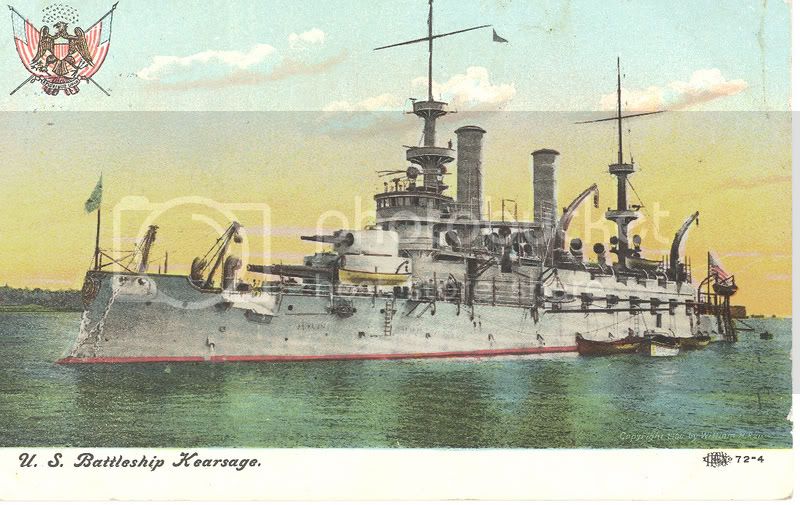
General Statistics
Displacement: 11,540 tons
Length: 375.3 feet
Beam: 72.3 feet
Draft: 23.5 feet
Speed: 16 knots
Complement: 553 officers and men
Armament: 4 x 13 inch guns
14 x 6 inch guns
20 x 6 pounder guns

USS Kearsarge (BB-5), the lead ship of her class of battleships, was the first ship of the United States Navy to be named, by act of Congress, in honour of the famous American Civil War sloop-of-war Kearsarge. She was the only US battleship not named after a state.
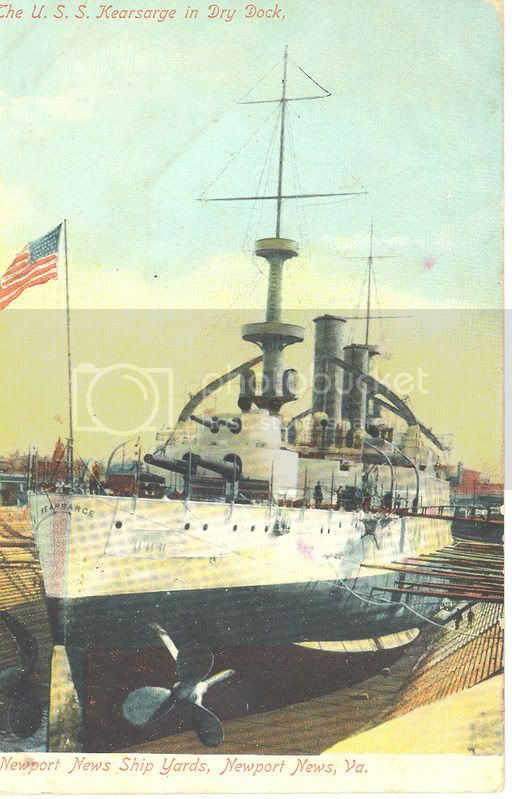
Her keel was laid down by the Newport News Shipbuilding Company of Newport News, Virginia on the 30th of June 1896. She was launched on the 24th March 1898, sponsored by Mrs. Herbert Winslow, daughter-in-law of Captain John A. Winslow, who had commanded the sloop Kearsarge during her famous battle with Alabama. This launch also afforded spectators the opportunity to view the launch of sister ship Kentucky (BB-6) only one hour later in the neighbouring berth
This is a photograph taken in 1899, while the USS Kearsarge was making 16.82 knots on trials off the U.S. East Coast.
Note that her broadside battery of five-inch guns had not yet been installed.
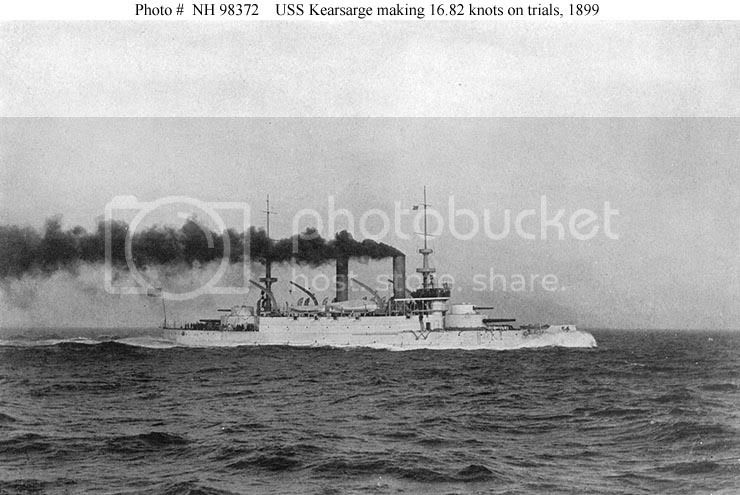
She was commissioned on 20 February 1900 with Captain William M. Folger in command.
In drydock during her trials period, 18th of September 1899.
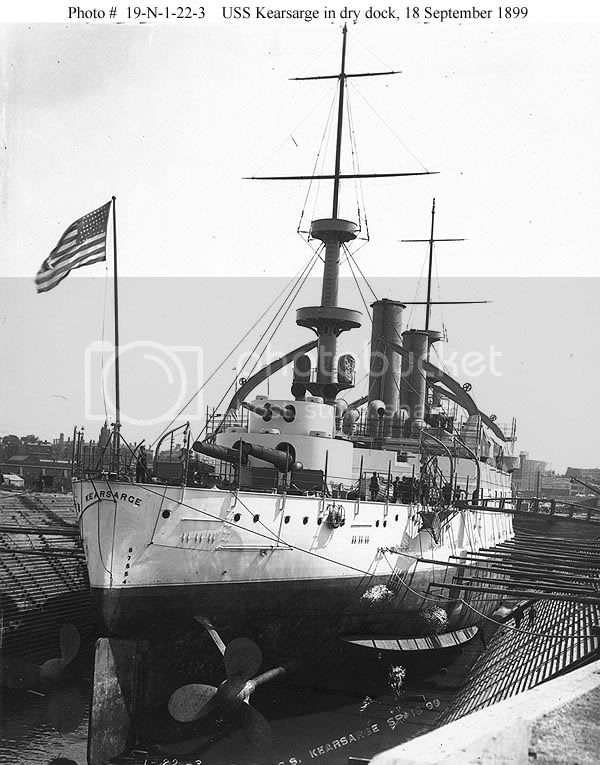
The USS Kearsarge became flagship of the North Atlantic Station, cruising down the Atlantic seaboard and in the Caribbean Sea.
From the 3rd of June 1903 to the 26th of July 1903 she served briefly as flagship of the European Squadron.
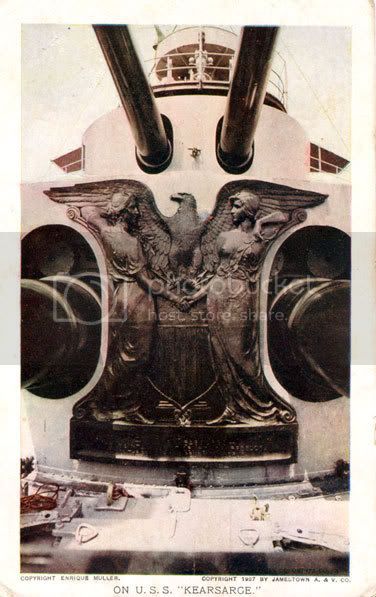
She returned to Bar Harbor, Maine, on the 26th of July 1903 and resumed duties as flagship of the North Atlantic Fleet. She sailed from New York on the 1st of December 1903 for Guantanamo Bay, Cuba, where on the 10th of December the United States took formal possession of the Guantanamo Naval Reservation. Following maneuvers in the Caribbean Sea, she led the North Atlantic Battleship Squadron to Lisbon, Portugal, where she entertained the King Charles of Portugal on 11 June 1904. She next steamed to Phaleron Bay, Greece, where she celebrated the Fourth of July with King George I of Greece and his son and daughter-in-law, Prince Andrew of Greece and Princess Alice of Battenberg. The squadron paid goodwill calls at Corfu, Trieste, and Fiume before returning to Newport, Rhode Island, on the 29th of August 1904.
Kearsarge remained flagship of the North Atlantic Fleet until relieved on the 31st of March by the battleship USS Maine (BB-10), but continued operations with the Fleet. During target practice off Cape Cruz, Cuba, on 13 April 1906, an accidental ignition of a powder charge of a 13 inch gun killed two officers and eight men. Four men were seriously injured. Attached to the Second Squadron, Fourth Division, she sailed on the 16th of December 1907 with the "Great White Fleet" battleships of the United States.
A photograph whilst in a Pacific Coast harbor during the first half of 1908, while participating in the first leg of the "Great White Fleet"'s cruise around the World.

Another photograph in drydock at the Puget Sound Navy Yard, Bremerton, Washington, 30 May 1908.
Kearsarge was then preparing for the trans-Pacific leg of the "Great White Fleet's voyage around the World.
Note her ram bow, figurehead, and anchors.
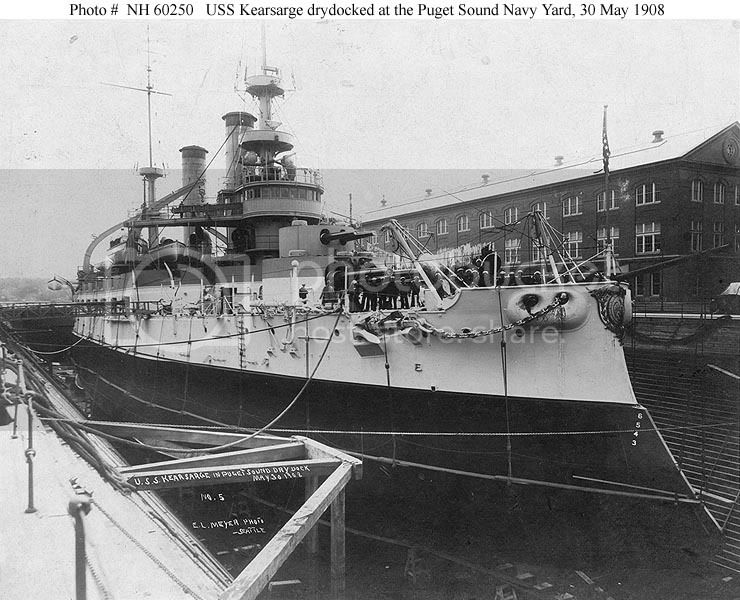
USS Kearsarge was decommissioned at the Philadelphia Navy Yard on the 4th of September 1909 for modernization. She was recommissioned on 23rd of June 1915 for operations along the Atlantic coast until the 17th of September when she departed Philadelphia to land a detachment of Marines at Vera Cruz, Mexico. She remained off Vera Cruz from the 28th of September 1915 to the 5th of January 1916, then carried the Marines to New Orleans, Louisiana, before joining the Atlantic Reserve Fleet on the 4th of February 1916 at Philadelphia. She trained Massachusetts and Maine State Naval Militia until America entered World War I, then trained thousands of armed guard crews as well as naval engineers in waters along the East Coast ranging from Boston, Massachusetts, to Pensacola, Florida. On the evening of the 18th of August 1918, Kearsarge rescued twenty six survivors of Norwegian barque Nordhav which had been sunk by the German Submarine U-117. The survivors were landed in Boston.
Anchored off New York City during the October 1912 naval review.

Kearsarge continued as an engineering training ship until 29 May 1919 when she embarked United States Naval Academy midshipmen for training in the West Indies. The midshipmen were debarked at Annapolis, Maryland, on the 29th of August and Kearsarge proceeded to the Philadelphia Navy Yard, where she was decommissioned on the 10th of May 1920 for conversion to a crane ship and a new career. She was given hull classification symbol AB-1 on the 5th of August 1920.
As Crane Ship No. 1, her name was struck from the Naval Vessel Register 22 June 1955. She was sold for scrapping 9 August 1955.
A final photograph of this fine ship.
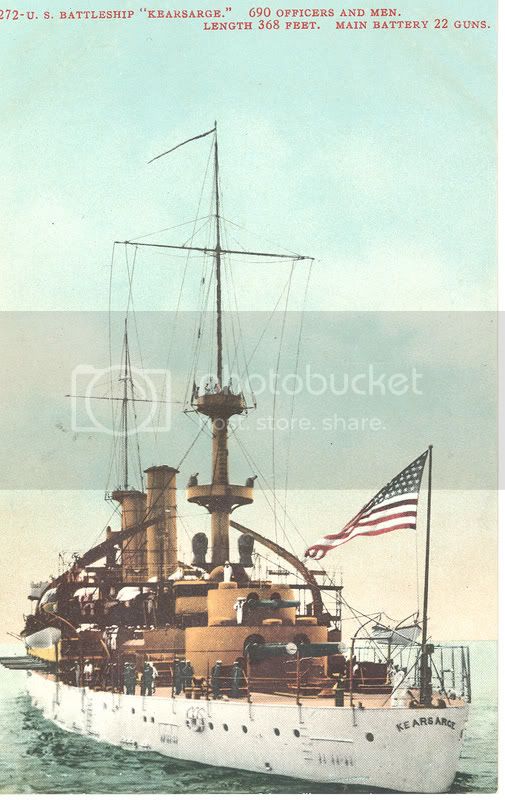
The next instalment will be the Europe Cruise of the USS Kearsarge
Regards
Sean









